#Boeing Commercial Airplanes
Explore tagged Tumblr posts
Text






The Boeing 787 Dreamliner, Boeing’s all-new composite airliner, received certification from the EASA and the FAA on August 26, 2011.
#United Airlines 787 Dreamliner#Boeing 787 Dreamliner#certification#26 August 2011#anniversary#Terminal E#Boeing Commercial Airplanes#Zurich#Flughafen Zürich#Zurich Airport#Schweiz#Switzerland#technology#engineering#landscape#summer 2019#travel#original photography#vacation#landmark#history#San Francisco International Airport#SFO#ZRH
2 notes
·
View notes
Text
Boeing Halts Talks with Striking Union, Withdraws Pay Offer

Source-reuters.com
No Progress in Negotiations as Strike Enters Fourth Week
Boeing has halted negotiations with around 33,000 factory workers as their strike nears its fourth week, the company announced on Tuesday. The aerospace giant, after failing to reach a resolution with union representatives, withdrew its latest pay offer. The negotiations, mediated by federal officials on Monday and Tuesday, ended in a stalemate, showing no signs of a potential agreement. According to sources familiar with the talks, both sides remain deeply divided.
Stephanie Pope, head of Boeing Commercial Airplanes, expressed disappointment over the outcome, stating in a memo to employees that the union did not seriously consider the company’s proposals. She labeled the union’s demands “non-negotiable” and declared that further discussions were pointless. “Our offer has been withdrawn,” Pope said, adding that Boeing had already been taking steps to conserve cash as the strike continues to impact its operations.
Boeing Commercial Airplanes is now exploring alternative financial measures, including raising billions through a sale of stock and equity-like securities, as the strike has caused significant disruption to production at its West Coast factories. These facilities manufacture some of Boeing’s most popular aircraft, including the 737 MAX, 767, and 777 models. With its investment-grade credit rating at risk, the company has also introduced temporary furloughs for thousands of salaried employees to mitigate financial losses.
Union Rejects Boeing’s Pay Offer
The striking workers, represented by the International Association of Machinists and Aerospace Workers (IAM), are seeking a 40% pay increase over four years and the restoration of a defined-benefit pension, which was eliminated in a previous contract. Boeing had initially offered a 25% wage hike over the same period, but union members overwhelmingly rejected the proposal, with more than 90% voting against it.
In response, Boeing presented an improved offer last month, which included a 30% pay raise and the reinstatement of a performance bonus. Describing it as their “best and final” offer, Boeing hoped it would satisfy the union’s demands. However, a survey conducted by the union revealed that its members still found the offer insufficient. According to union leaders, Boeing’s revised offer failed to address several key issues such as wage progression, vacation accrual, and retirement benefits.
Despite the company’s assertion that they bargained in good faith, union representatives maintain that Boeing refused to address critical concerns. The IAM criticized Boeing for being “hell-bent” on sticking to its previous offer without making any meaningful changes. Union officials expressed frustration over the company’s refusal to discuss important provisions like wage increases, vacation, and pension benefits.
Future Uncertain as Strike Continues
With Boeing commercial airplanes withdrawing its pay offer and both sides showing no willingness to compromise, the future of the strike remains uncertain. Boeing’s production lines for its key commercial aircraft remain shut down, exacerbating financial pressures on the company. As the strike stretches into its fourth week, it poses significant challenges for both Boeing and its striking workers.
The union’s demand for a substantial pay raise and the restoration of pension benefits underscores the deep divide between labor and management. Boeing’s efforts to conserve cash and explore alternative funding options reflect the company’s determination to mitigate the financial fallout. However, without a resolution in sight, the standoff is likely to continue, with potentially long-term consequences for both parties.
0 notes
Text

1940 photo of a TWA Boeing 307B Stratoliner
#Boeing#307#Stratoliner#Boeing 307#B307#airliner#passenger plane#commercial aviation#flying#vintage aviation#airplane#plane
90 notes
·
View notes
Text

A United Air Lines’ Boeing 247 in the maintenance hanger.
#air lines#airlines#vintage aircraft#commercial aircraft#united air lines#vintage travel#vintage air travel#air travel#boeing#boeing 247#aircraft#airplanes#airliners#united airlines
7 notes
·
View notes
Text
youtube
Happy 43rd anniversary to the 1st flight of the Boeing 757! The race car of the skies!
youtube
Other part showing the full flight!
3 notes
·
View notes
Text

A commercial airplane without the seats
#airplane#flying#commercial flying#air canada#cargo plane#a350#airbus#aviation#budget airline#ryanair#corporate greed#assigned seating#low cost#boeing#flying with children#wings#FAA#aircraft#jet airliner#jumbo jet#private jet
3 notes
·
View notes
Text
Spirit only operates Airbuses so I'm starting a fundraiser to gift them a 737 MAX that instantly explodes from it's own vile aura the minute you step inside.
#Shitpost#Commercial Aviation#Spirit Airlines#Boeing#Boeing 737 MAX#Budget Airlines#Airplanes#Avgeek
6 notes
·
View notes
Text


Boeing 737-800 operated by the business jet and 737 Charter company KaiserAir.
#Plane posting#avgeek#Boeing 737#Boeing 737-800#Aviation#Commercial Aviation#General Aviation#Aircraft#Commercial Aircraft#Airplane#Plane#B737#my photos
4 notes
·
View notes
Text
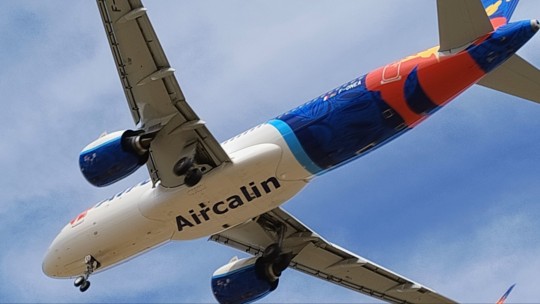

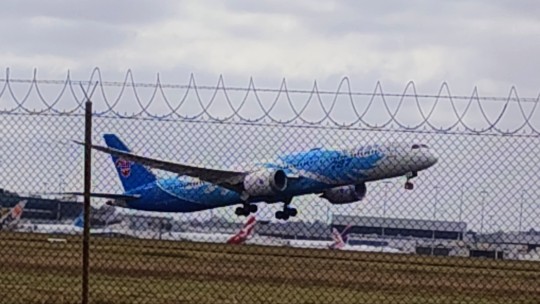

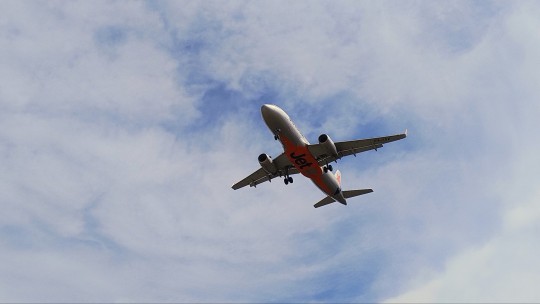
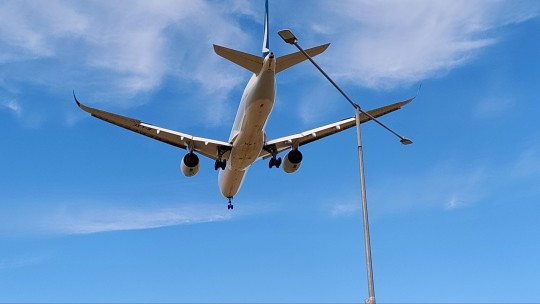
YMML my beloved
4 notes
·
View notes
Video
Airbus A380 over South London by Adam Swaine Via Flickr: The Airbus A380 is a double-deck, wide-body, four-engine jet manufactured known as the world's largest commercial passenger aircraft. Despite the size, the A380 delivers lower community noise and carbon emissions per passenger than the Boeing 747-400 despite having almost 50% more floor space and 60% more headroom.
#boeing#boeing A380#planes#commercial#flight#london airspace#Adam Swaine#fuji#2024#BA#british airways#england#english#britain#british#skies#flying machines#airplanes#South East#east dulwich#London#flickr
0 notes
Text

📷 Just Planes
1 note
·
View note
Text




The Boeing 787 Dreamliner, Boeing’s all-new composite airliner, received certification from the EASA and the FAA on August 26, 2011.
#United Airlines 787 Dreamliner#Boeing 787 Dreamliner#certification#26 August 2011#anniversary#Terminal E#Boeing Commercial Airplanes#Zurich#Flughafen Zürich#Zurich Airport#Schweiz#Switzerland#technology#engineering#landscape#summer 2019#travel#original photography#vacation#landmark#history#San Francisco International Airport#SFO#ZRH
1 note
·
View note
Text
A nearly brand new 2023 Boeing 737 MAX, flown by Alaska Airlines, lost a window and a portion of its siding tonight due to decompression after takeoff.

#Source: Aviation Reddit#Transportation: commercial aviation#Transportation: Boeing 737 MAX#I'd be crying like a goddam baby not going to lie#aviation#airplanes#aircraft#airliner#planes#flying#Boeing#Boeing 747
0 notes
Text

Polish Airline Boeing 767 taxing into Warsaw Okecie
#Airliner#passenger jet#Boeing#767#airport#flying#aviation#planes#airplanes#aircraft#commercial aviation
17 notes
·
View notes
Text

The luxurious interior of a TWA Boeing 307 Stratoliner - 1940.
#vintage illustration#vintage aircraft#aircraft#commercial aircraft#civilian aircraft#airplanes#vintage airplanes#passenger planes#airlines#airliners#stratoliner#luxury travel#luxury air travel#boeing#boeing 307 stratoliner#boeing 307#boeing stratoliner#the 40s#the 1940s#twa#trans world airlines
46 notes
·
View notes
Note
Hi! I have a question. There's this theory going around that 802/803 could be based on the movie Airport 1975. I don't know if you've seen it, but basically something crashes into the cockpit of Boeing 747, which causes the crew to become incapacitated and there is no one on the plane who is knowledgeable enough to take the controls. So they send in a helicopter, which hovers above the plane, and a replacement pilot is extended on a tether from it to climb into the cockpit of the plane and take the controls.
I was curious if it could work in reality. I mean, the situation sounds pretty crazy and I don't know how rooted in reality it actually is, but what I'm interested about is whether a helicopter pilot could land a plane like that. Would they need to be acquainted with flying airplanes for it to work? I know you said that helicopter pilots have a head start if they want to learn how to fly planes because the basics are the same, so I was wondering if a helicopter pilot who has never flown a plane could potentially land it without hurting anyone? Are they knowledgeable enough to try? Sorry if the question is dumb or the answer obvious.
TW: aviation accident
Yes, I've indeed seen the movie, together with its predecessor Airport (1970), to better appreciate the greatest aviation film of them all: Airplane! (1980). Seriously, although it's a comedic parody of cheesy air disaster films, it somehow manages to be more accurate than all of them in terms of flying and aviation safety. Plus, all the jabs at how the Airport movies portray female characters are so satisfying. The first half of Airport 1975 is basically Workplace Sexual Misconduct: The Movie.
youtube
To answer your question, no, there has never been a case of non-airline pilot not a part of the flight crew successfully landing a jet airliner. There have been a few cases of student pilots landing a light aircraft when the instructor became incapacitated, but the only time it came even close to that on a jet airliner was Helios Flight 522 in 2005.
A ground engineer set the cabin pressurization system to manual for some testing and forgot to set it back to automatic. The flight crew never spotted it and slowly succumbed to the effect of hypoxia while cruising at 34,000 feet. A flight attendant entered the cockpit at the later stage of the flight with a portable oxygen supply reserved for crew members, the dropped down oxygen masks in the cabin, the lack of communication from the flight crew, the aimless holding pattern over the Athens airport and the fighter jets sent out by the Hellenic Air Force to investigate probably gave it away that something was terribly wrong with that flight. The flight attendant held a commercial pilot license, though not qualified to fly the 737. Tragically, the jet was already critically low on fuel, and the No. 1 engine flamed out as soon as he entered the cockpit. Investigators later concluded that he would not have been able to control the aircraft under such circumstances with his experience, as engine flameout would take many of the automated systems offline. He attempted to send out a mayday call and briefly waved at the fighter jets as a sign of acknowledgement. The fighter pilots then pointed at the direction of the airport, hoping to guide the plane towards safety. The flight attendant at the yoke simply replied by pointing down, signaling an immanent crash. As a last ditch effort, he banked the plane away from Athens towards a rural area, pulling the yoke back in an attempt to soften the impact. Shortly after, the 737 crashed into a hill just outside of Athens. There were no survivors.
youtube
If someone with a commercial pilot license in the airplane category couldn't do it, a helicopter pilot with limited to no experience on any plane wouldn't be able to either. They might have a better idea than the average layman about how to keep the plane in the air, but when it comes to configuring the jet for landing, they would have to be instructed by an actual airliner pilot through it like the rest of us. Just look at the differences between the cockpit of a Cessna 172 and one of a B777:
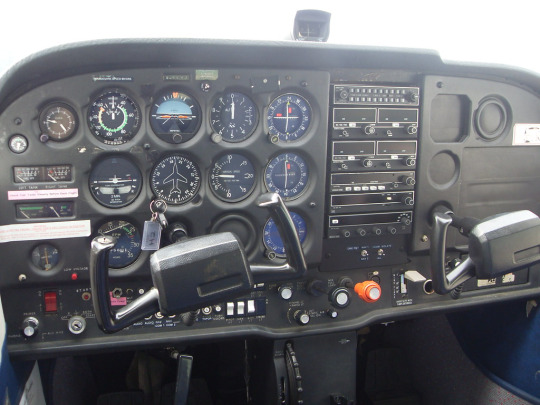
Cessna 172
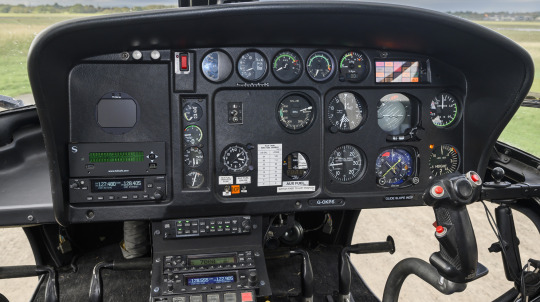
AS350, aka Tommy's helicopter in 7x03
They don't look that different, yeah? I'd say Tommy would recognize most of the instruments on the Cessna even without any experience on it. Now let's look at the B777:
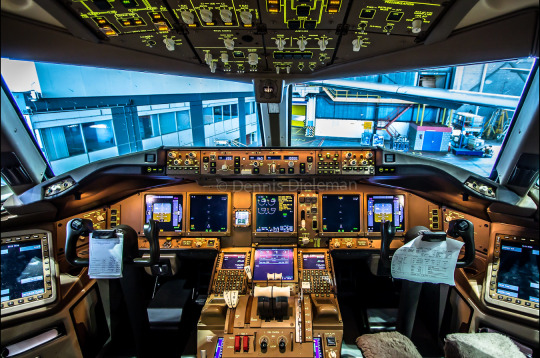
So many screens, so many buttons in front, on the side, even on top. Most modern airliners also operate on a fly-by-wire system, meaning the pilots' inputs go through a flight computer and it calculates the optimal for the actuators to respond. If you don't have at least some basic knowledge of how the flight control systems on a certain model of airliner work, you risk misdiagnosing any issue encountered, even crashing the plane even though the problems are minor and solvable by letting the computers take over. (Air France Flight 447, I'll spare you the details, it's still too scary for me.)
That's why in Airport 1975, it's the US Air Force responding to the 747 in danger with one of its helicopters, and the one tethering into the cockpit at first isn't a helicopter pilot, he used to fly the "707 tanker" (KC-135 I presume). When he falls to his death, the film makes it a major plot point that the only person on board the helicopter by then is Nancy's boyfriend, chief flight instructor of the airline.
This scene is actually one of the more realistic scenes in the film, at least physically. It was the 1970s and CGI technology was lacking, so the scene was filmed with an actual USAF helicopter flying in front of a 747. If you believe this person who claimed to be the crew chief working on that exact helicopter, the stunt man got as near as 3 feet away from the fuselage of the jet.
Military helicopters fly close to big airplanes all the time, air tankers are basically flying gas stations, but helicopters usual fly behind air tankers. You see, as I mentioned before, wings of airplanes deflect incoming air stream downward to generate lift, so the bigger the plane, the more air needed, meaning heavier planes have faster stall speed. Helicopters on the other hand, can go straight up and down without moving horizontally, and they're designed for maneuverability, not speed, so even the best performing military helicopter has its maximum speed dangerously close to the stall speed of a 747. In order to make a midair pilot transfer like that possible, the helicopter would have to fly as fast as possible while the jet limping close to stall speed, the helicopter pilots would also have to fly in formation with the jet on autopilot, without any coordination.
So if our weewoo show really decides to recreate this famous stunt, not even trying to explain why the USAF/USCG are not available like in S7, leaving the LAFD to its own device, Tommy would realistically not be hoisting into the crippled jet. He would be flying the helicopter. Honestly it's a much tougher job than dropping into the plane and landing it, Tommy's expertise is needed in the helicopter. Like the first replacement pilot, he falls, so he dies. But if the helicopter makes a wrong move and crashes into the jet, everyone dies.
#That feels good to get it off my chest#Thank you anon#aviation realism#|<- in case you want to block posts like this#ask answered#tommy kinard#911 speculation#911 spoilers#bucktommy
70 notes
·
View notes